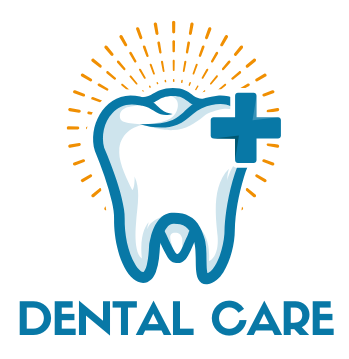Pediatric dentistry is essential for ensuring the oral health of children, addressing their unique needs from infancy through adolescence. Establishing good dental habits early lays the groundwork for a lifetime of healthy teeth and gums. This guide outlines best practices for parents and caregivers, grounded in scientific research and expert recommendations, to help children achieve and maintain optimal dental health.
From the first tooth eruption, it’s important to start a consistent oral hygiene routine that includes brushing and flossing. Regular dental visits are crucial for early detection of potential issues and for providing preventive care. Additionally, fostering healthy eating habits plays a significant role in oral health, as nutritious foods contribute to strong teeth. By understanding the importance of pediatric dentistry and actively participating in their children’s oral care, parents can create an environment that encourages positive dental habits. Through early intervention, education, and supportive experiences, we can ensure that children grow up with healthy smiles. With the right approach, parents can empower their children to take charge of their dental health, setting the stage for lifelong well-being.
Understanding Pediatric Dentistry
Pediatric dentistry is a specialized branch of dentistry dedicated to the oral health of children. Pediatric dentists undergo additional training to understand the physical, emotional, and developmental aspects of treating young patients. They are well-equipped to handle various issues, from cavity prevention to management of dental trauma.
Importance of Pediatric Dentistry
- Early Intervention: Many dental issues can be prevented or treated more effectively when identified early. Pediatric dentists can detect problems like misalignment, cavities, and other dental diseases before they become serious.
- Education: Pediatric dentists educate children and parents about proper oral hygiene practices and the importance of nutrition for dental health. This foundational knowledge empowers families to prioritize dental care.
- Behavior Management: Pediatric dentists are trained to manage anxiety and behavioral issues, making dental visits less stressful for children. They use child-friendly techniques to create a welcoming atmosphere.
1. Start Early with Oral Hygiene
Infants and Toddlers
Oral hygiene should begin even before the first tooth erupts. Parents can start cleaning their baby’s gums with a soft, damp cloth. This practice helps remove bacteria and prepares the child for a future oral hygiene routine.
Key Guidelines for Infant Oral Care
- Before Teeth Erupt: Wipe gums with a damp cloth after feeding to remove any residual milk or food particles.
- First Tooth: Once the first tooth appears, typically around six months, introduce a soft-bristled toothbrush. Choose one designed for infants, with a small head and soft bristles.
- Fluoride Toothpaste: By age two, start using a pea-sized amount of fluoride toothpaste, as recommended by the American Academy of Pediatric Dentistry (AAPD). Fluoride helps strengthen teeth and reduce the risk of decay.
Establishing a Routine
Creating a consistent brushing routine is crucial for instilling good habits. Children should brush their teeth twice a day, ideally in the morning and before bedtime. To make brushing enjoyable, consider these strategies:
- Singing Songs: Use fun songs that last about two minutes to encourage children to brush for the full duration. You can find various children’s songs designed specifically for brushing teeth.
- Using a Timer: Visual timers or apps can help children understand the concept of time, making the process engaging and fun.
2. Schedule Regular Dental Visits
First Dental Visit
The AAPD recommends that children have their first dental visit by their first birthday or within six months after the first tooth erupts. Early visits allow the dentist to assess dental health, provide guidance, and establish a dental home for the child.
Frequency of Visits
After the initial visit, children should see the dentist every six months for check-ups and cleanings. Regular visits help:
- Detect Cavities Early: Regular examinations can identify cavities and other issues before they worsen.
- Monitor Development: Dentists can monitor the development of teeth and jaws to ensure everything is progressing normally.
- Provide Preventive Treatments: Regular visits allow for timely preventive treatments like fluoride applications and sealants.
3. Promote Healthy Eating Habits
Nutrition and Teeth
A balanced diet plays a crucial role in maintaining healthy teeth. Nutrient-rich foods contribute to tooth development and overall health. Key nutrients include:
- Calcium: Found in dairy products, leafy greens, and fortified foods, calcium is essential for strong teeth and bones.
- Phosphorus: Present in fish, eggs, and nuts, phosphorus works in tandem with calcium to strengthen teeth.
Limit Sugary Snacks
Limiting sugary snacks and drinks is vital for preventing cavities. Sugars can lead to tooth decay when they interact with bacteria in the mouth. Encourage healthier snack options, such as:
- Fresh Fruits and Vegetables: These are not only healthy but also help clean teeth naturally.
- Whole Grains: Opt for whole grain snacks, which are better for overall health.
- Cheese and Yogurt: These dairy products provide calcium and are less likely to contribute to cavities.
Resources for Healthy Eating
- Dietary Guidelines for Americans: Government recommendations for a balanced diet.
- MyPlate: An educational tool to help families create healthy meals.
4. Teach Proper Brushing and Flossing Techniques
Brushing
Teaching children the correct brushing technique is essential for effective oral hygiene. Here are some guidelines:
- Use a Small Amount of Toothpaste: A pea-sized amount is sufficient for children. Monitor their use of toothpaste to prevent swallowing excessive fluoride.
- Brush Twice a Day: Encourage children to brush their teeth both in the morning and before bedtime.
- Proper Technique: Teach children to use gentle circular motions and to cover all surfaces of their teeth, including the gum line. Brushing should last for at least two minutes.
Flossing
Flossing should begin as soon as two teeth touch, typically around age 2 or 3. Children generally require help with flossing until they are about 8 or 9 years old. Here are some guidelines for flossing:
- Use Dental Floss: Show children how to use dental floss correctly, ensuring they curve it around each tooth and slide it gently beneath the gum line.
- Establish a Routine: Incorporate flossing into the daily dental care routine, ideally before brushing at night.
5. Consider Sealants and Fluoride Treatments
Dental Sealants
Dental sealants are a protective coating applied to the chewing surfaces of back teeth (molars) to prevent cavities. Sealants are especially beneficial for children, as molars are prone to decay. The procedure is quick, painless, and effective.
When to Apply Sealants
- First Permanent Molars: As soon as the first permanent molars erupt, usually around age 6.
- Second Molars: On second molars, typically around age 12.
Fluoride Treatments
Fluoride is a mineral that strengthens tooth enamel and helps prevent decay. Many pediatric dentists recommend fluoride varnishes for young children, especially those at higher risk for cavities.
Benefits of Fluoride
- Reduces Cavity Risk: Fluoride makes teeth more resistant to decay.
- Reverses Early Decay: It can help reverse early signs of tooth decay by remineralizing weakened enamel.
6. Encourage Healthy Habits Beyond the Toothbrush
Mouthguards
For children involved in sports, wearing a mouthguard is essential to protect their teeth from injury. Custom-fitted mouthguards provide the best protection and should be worn during all contact sports. Parents should ensure that their child’s mouthguard fits properly and is comfortable.
Avoiding Harmful Habits
Certain habits can adversely affect dental health. Parents should discourage:
- Thumb Sucking: While common in infants, prolonged thumb sucking can lead to misalignment of teeth and may require orthodontic intervention.
- Nail Biting: This habit can damage teeth and introduce bacteria into the mouth.
- Using Teeth as Tools: Children should be taught not to use their teeth to open bottles or packages, as this can cause chips or cracks.
7. Be a Role Model
Children often mimic the behavior of adults. To encourage good dental hygiene, parents should:
- Practice Good Oral Hygiene: Demonstrate brushing and flossing regularly, showing children that dental care is important for everyone.
- Make it a Family Activity: Brush and floss together to instill the importance of dental care in a fun, interactive way.
8. Foster a Positive Attitude Toward Dental Visits
Making Visits Enjoyable
Many children experience anxiety about dental visits. To alleviate fears:
- Choose a Pediatric Dentist: Find a dentist who specializes in treating children. Look for a welcoming, child-friendly environment that uses child-friendly techniques.
- Positive Reinforcement: Use praise and rewards to encourage children before and after dental visits. Consider small incentives, such as stickers or a fun outing, to make visits less daunting.
Discussing Dental Health
Talk positively about dental visits and explain what will happen in simple terms. Using children’s books and videos about dental health can help familiarize them with the process and reduce anxiety.
Conclusion
Maintaining children’s dental health demands a proactive approach that integrates good hygiene practices, regular dental visits, and healthy eating habits. By adhering to these best practices, parents can instill lifelong habits that foster strong, healthy teeth and gums. Early intervention, education, and positive experiences are crucial for helping children grow up with beautiful smiles. Understanding the significance of pediatric dentistry and actively engaging in their children’s oral health journey allows parents to create a supportive environment that promotes healthy habits. This involvement not only helps prevent dental issues but also empowers children to take responsibility for their own dental care.
Encouraging consistent brushing and flossing, scheduling regular check-ups, and providing nutritious snacks can significantly impact children’s long-term dental health. Additionally, fostering a positive attitude towards dental visits can reduce anxiety and build confidence. With proper care and attention, children can enjoy a lifetime of healthy smiles, setting the stage for optimal oral health well into adulthood. Through a committed partnership between parents and pediatric dentists, we can ensure that every child has the opportunity for a bright and healthy future.
SOURCES
HealthyChildren.org – A resource from the American Academy of Pediatrics.
KidsHealth.org – Provides information about children’s health, including dental care.
American Academy of Pediatric Dentistry – Offers resources and guidelines for pediatric dental care.
American Dental Association – Provides information on oral health, dental care, and resources for families.
HISTORY
Current Version
October 17, 2024
Written By:
SUMMIYAH MAHMOOD




